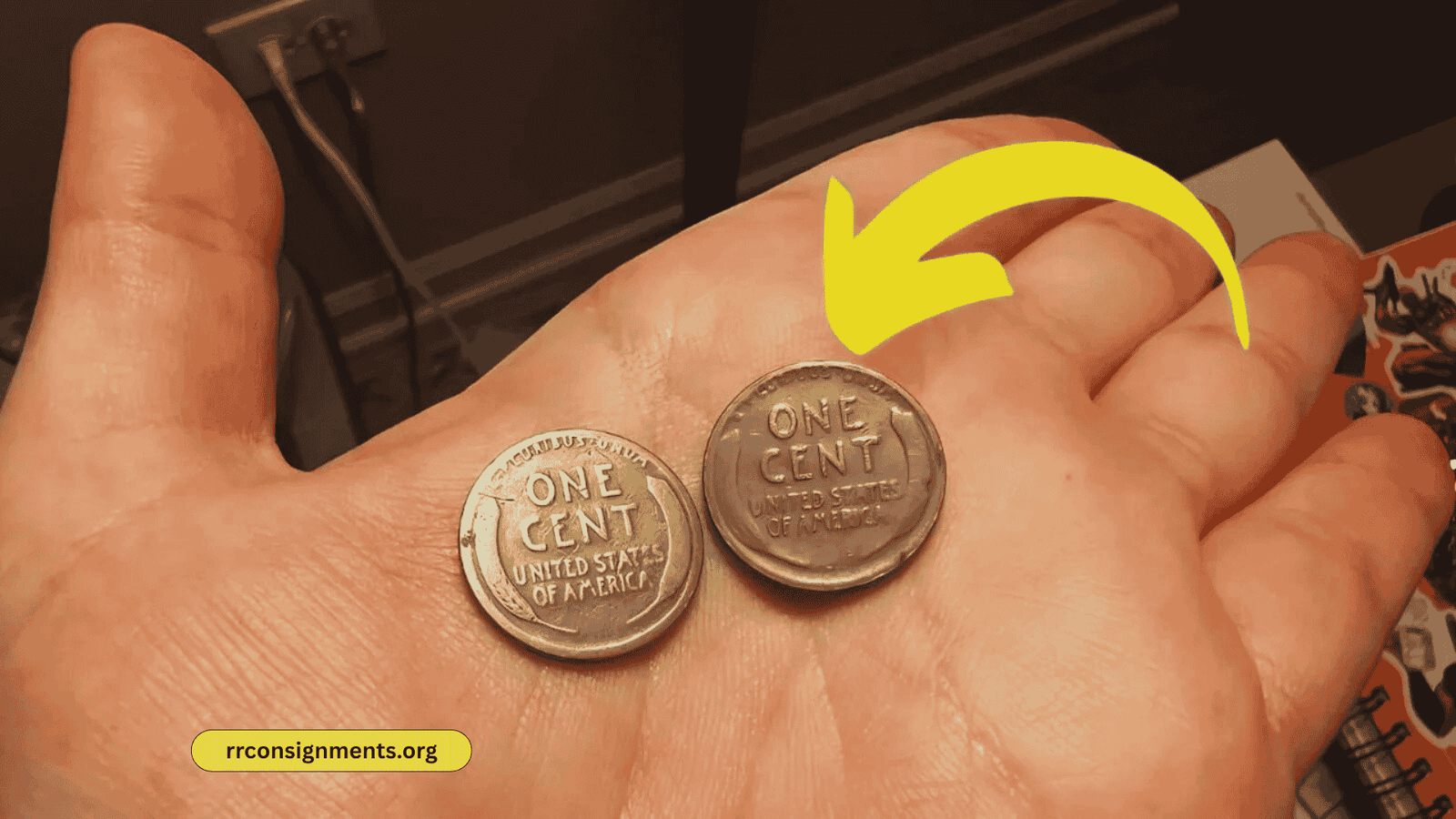Imagine finding a penny worth $5.5 million in your loose change. Sounds like a dream, right? The Lincoln Wheat Penny, a humble coin from yesteryear, could be that hidden treasure. Some rare versions are worth millions, and they might still be in circulation! Ready to uncover this numismatic mystery?
What Is the Lincoln Wheat Penny?
The Lincoln Wheat Penny is a one-cent U.S. coin minted from 1909 to 1958. Featuring Abraham Lincoln’s profile on the front and two wheat stalks on the back, it’s a collector’s favorite. But certain rare editions, due to minting errors or low production, can fetch jaw-dropping prices. Could one be in your coin jar?
The Surprising Origins of the Wheat Penny
Introduced in 1909 to honor Lincoln’s 100th birthday, the Lincoln Wheat Penny was groundbreaking. Designed by Victor David Brenner, it was the first U.S. coin to feature a real historical figure. The wheat stalks symbolized America’s agricultural prosperity. But mistakes during minting created some of the rarest coins in history.
A Wartime Blunder That Made Millions
During World War II, copper was scarce, so the U.S. Mint switched to zinc-coated steel for pennies in 1943. A few 1943 Bronze Pennies were accidentally struck with copper, creating a numismatic legend. Only 10–15 exist, making them insanely valuable—some estimate up to $5.5 million in pristine condition!
Why Is the Lincoln Wheat Penny So Valuable Today?
The Lincoln Wheat Penny captivates collectors due to its rarity, historical significance, and minting errors. Coins like the 1943 Bronze Penny or 1909-S VDB are rare gems. Their value skyrockets with collector demand and pristine condition. The thrill of possibly finding one keeps hobbyists hooked.
Key Factors Driving Value
- Rarity: Low mintage years like 1909-S (484,000 minted) or 1931-S (866,000 minted) are highly sought after.
- Minting Errors: Doubled dies (e.g., 1955) or wrong materials (e.g., 1943 bronze) create unique coins.
- Condition: Mint-state coins with original copper-red color fetch premium prices.
How to Hunt for Valuable Wheat Pennies
You don’t need to be a pro to start your coin collecting adventure. Check your pocket change, coin jars, or inherited collections. Here’s how to spot a valuable Lincoln Wheat Penny:
- Check the Date: Look for key years like 1909, 1914, 1922, or 1943.
- Find the Mint Mark: Look under the date for “S” (San Francisco) or “D” (Denver). No mark means Philadelphia.
- Test 1943 Pennies: Use a magnet. Steel pennies stick; rare bronze ones don’t.
- Inspect Condition: Coins with sharp details and minimal wear are worth more.
- Get It Graded: Professional services like PCGS or NGC can authenticate and appraise your coin.
Where to Look
- Pocket Change: Rare pennies still surface in circulation.
- Coin Rolls: Buy rolls from banks and search for treasures.
- Flea Markets & Estate Sales: Old collections often hide gems.
- Coin Shops & Online: Buy from reputable dealers, but beware of fakes.
Jaw-Dropping Facts About Wheat Pennies
The Lincoln Wheat Penny is full of surprises. Here are some mind-blowing facts:
- A 1943 Bronze Penny sold for $1.7 million in 2010, with experts estimating its 2025 value at $5.5 million.
- The 1909-S VDB caused a public outcry over Brenner’s initials, leading to their removal after just days.
- Only two 1944-S Steel Pennies exist, valued at over $700,000 each.
- The 1955 Doubled Die penny, with blurry text, can fetch $100,000+ in mint condition.
Table 1: Top 5 Most Valuable Lincoln Wheat Pennies
| Year | Variety | Mintage | Estimated Value | Why It’s Rare |
|---|---|---|---|---|
| 1943 | Bronze | ~10–15 | Up to $5.5M | Mistakenly struck in copper during WWII |
| 1909-S | VDB | 484,000 | $650–$3M | Low mintage, designer initials controversy |
| 1944-S | Steel | 2 | $700,000+ | Rare off-metal error |
| 1955 | Doubled Die | ~20,000 | $1,000–$100,000 | Noticeable doubling on date and text |
| 1922 | No D | Unknown | $500–$10,500 | Missing mint mark error |
Expert Tips for Coin Collectors
Ready to dive into coin collecting? Here are insider secrets to maximize your success:
- Educate Yourself: Read “The Red Book” or join numismatic forums to learn key dates and errors.
- Avoid Cleaning Coins: Polishing can ruin value. Keep coins in protective holders.
- Authenticate Finds: Always get rare coins graded by PCGS or NGC to avoid counterfeits.
- Network with Collectors: Attend coin shows or join clubs like the American Numismatic Association.
- Be Patient: Finding a million-dollar penny is rare, but the hunt is thrilling!
Table 2: Where to Sell Your Valuable Pennies
| Platform | Pros | Cons |
|---|---|---|
| Auction Houses (e.g., Heritage Auctions) | High prices, professional authentication | Fees, wait times |
| Local Coin Dealers | Quick sales, in-person appraisal | May offer lower prices |
| Online Marketplaces (e.g., eBay) | Wide reach, easy listing | Risk of scams, fakes |
| Coin Shows | Direct access to collectors | Requires travel, time |
FAQs About Lincoln Wheat Pennies
Why Are Some Wheat Pennies Worth Millions?
Rarity, minting errors, and historical significance drive value. For example, the 1943 Bronze Penny is rare due to a wartime mistake.
Are Wheat Pennies Still in Circulation?
Yes, though rare, Lincoln Wheat Pennies (1909–1958) can still appear in pocket change or old collections.
How Do I Know If My Penny Is Valuable?
Check the year, mint mark, and condition. Use a magnet for 1943 pennies and consult a grading service.
Can I Clean My Wheat Penny?
No! Cleaning can damage the surface and reduce its value. Handle coins by the edges and store them safely.
Where Can I Sell a Valuable Penny?
Try auction houses, coin dealers, or coin shows. Always get an appraisal first to ensure a fair price.
Conclusion: Could You Be Holding a Fortune?
The Lincoln Wheat Penny is more than pocket change—it’s a piece of history with the potential to change your life. From the 1943 Bronze Penny worth up to $5.5 million to the thrill of the hunt, these coins keep collectors dreaming. Grab a magnifying glass, check your change, and start your numismatic adventure. Who knows? Your next penny could be a million-dollar treasure! Share your finds or join the coin collecting community to keep the excitement alive.











